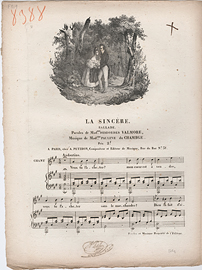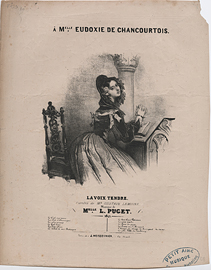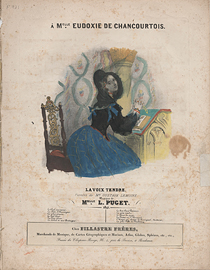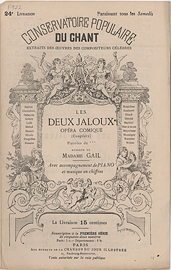We have seen very few women succeed in the field of dramatic music; but in the more modest, if not less difficult, genre, they have often ruled as queens. It suffices to name Mmes Duchambge, Mlle L. Puget, Mme Cinti-Damoreau, Malibran, Pauline Garcia.
– E [Escudier], La France musicale, December 28, 1845.
Women faced significant social constraints and institutional barriers in becoming composers. The Paris Conservatoire only opened composition classes to female students in 1861, although they were not eligible to compete for the Prix de Rome (the most prestigious composition prize) until 1903. Men and women remained segregated in their music classes and were allocated different kinds of music for study, composition, and performance. The gendering of music genres meant that women were discouraged from composing complex and large-scale forms, such as symphonic genres and opera. Many turned instead to smaller forms, particularly songs, and maintained a semi-professional or even a professional status, living by their trade.
The salon offered women a semi-public space to exhibit their compositions, particularly of the romance. William Cheng (2011) has recently argued the ways in which the genre’s musical aesthetic—simple, straightforward melody, with an easy accompaniment—paralleled the French bourgeoisie’s idealization of the feminine. Although Jacques-Auguste Delaire described the romance as “suitable to the eminently sensitive constitution of women” (1845), Cheng encourages us to interpret the genre instead as a performance of femininity. From this perspective, women could excel in song composition through their successful assimilation of these features, which were valued both by their public at the salons and by the consumers of sheet music.
Pauline Duchambge (1778–1858) wrote over 400 romances, and her music was a fixture in salons of the 1830s. She set many texts by her close friend and contemporary, Marceline Desbordes-Valmore (1789–1859), a highly regarded poet whose work was later admired by Baudelaire and Verlaine. Her younger contemporary, Loïsa Puget (1810–1889), often performed her own songs in fashionable salons, and was described by critic Henri Blanchard as the “queen of this genre of music.” Sophie Gail (1776–1819) composed four operas in addition to songs. The air from her opéra-comique Les deux jaloux (1813) was republished in the series Conservatoire Populaire du Chant in 1876, attesting to Gail’s continued importance in France.






